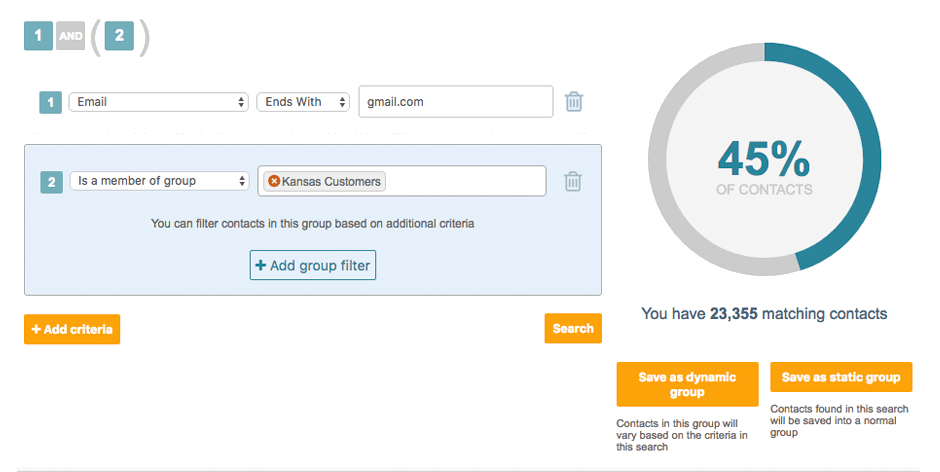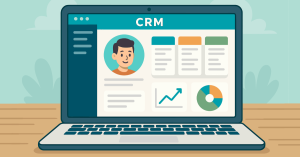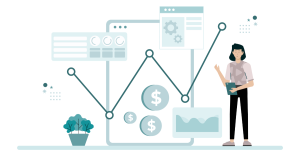Personalization, personalization, personalization—that’s the key to success for digital marketers these days. But the dirty secret of personalization is that you have to have the data first to make it happen.
The good news? Your CRM system is the perfect place to start.
As you begin to think about the ways you can personalize your digital campaigns, your CRM system can help you put framework around what you can—and can’t—personalize. Personalization can refer to the timing, segmentation strategy, or data points within an email (among other things). In the context of this article, however, we’re going to focus on how to use your CRM to create a segmentation strategy that personalizes your messaging to each member of your marketing list.
The Ultimate Strategy Guide to Microsoft Dynamics and Marketing Automation
Learn how to integrate dynamics with your email, social, & more
Segmentation Basics in Your CRM
So what exactly is segmentation in terms of your CRM and marketing automation platform? List segmentation is a subdivision of your contact list into a variety of smaller lists, based on things that each contact record has in common. You can create lists by industry, demographics, how they’ve interacted with content, what people have purchased, when their contacts are up for renewal, or where they are in the customer journey, and more.
It’s important to keep in mind that segmenting is not the same as targeting. Targeting is when you already know who you want to reach but don’t necessarily have them in your database, whereas segmenting for CRM is mining the info you already have about contacts and dividing them into groups so you can reach the right people at the right time.
What’s the Value of Segmenting Your Marketing Lists?
Gone are the days of the send-to-all marketing list. Your database of contact records is made up of people, and people like to be talked to like individuals, not blanket groups.
If you don’t segment, every customer—regardless of how they interact with you or what they’ve already purchased—will get the same newsletter, product updates, and sales pitches as everyone else. That’s isn’t a good way to make clients and potential clients feel like individuals, and it’s not a good way to improve engagement with your emails, either. Research confirms time and again that prospects want to see messages that relate to them, and because of this, segmented lists can generate open rates as much as 15% higher than non-segmented emails, and clickthrough rates as much as 100% higher than non-segmented emails.
With a segmented list, you will be able to:
- Reward customers for their loyalty
- Provide clients and leads with emails directly related to their interests
- Target your most-promising customers for re-engagement campaigns
- Tailor messages that follow up on customer/lead responses to a prior engagement
- Provide product suggestions based on preferences and prior purchases
Getting Started with List Segmentation
In most CRM systems, you will have an option to search for certain characteristics and create marketing lists based on people who match those characteristics. In Microsoft Dynamics, for example, you may use an Advanced Find to create a Static (one time) Marketing List or a Dynamic (ongoing) Marketing List. Often your search criteria will look for data-specific activities, engagement, region, owner, and more.
If your CRM makes this process a little messy, your marketing automation platform might be able to help. In the emfluence Marketing Platform, for example, you can use our Query Builder to create segments for everything from Contact Score to pages visited on your website, active/inactive in a certain timeframe, regional data and much, much more:

You may also want to consider if you’re segmenting to leads or contacts, as you will interact very differently with these two basic segments. For client segments, you will need to focus on keeping them interested and returning as clients. Lead segmentation allows you to engage contacts that are potentially interested in becoming clients. For leads, you will want to focus on building trust and crafting messages that engages them, acknowledging and catering to their unique needs. You want to make sure you are nurturing these leads throughout the sales funnel to a final purchase.
Once you know how you’ll segment your database, you can create segments based on:
- Demographic profiling – location, interests, gender, age, etc. are all details that can be tracked in your CRM
- Email behavior and responses – make sure you know and track who opens your emails and who doesn’t, as well as any actions they take from there (located in your marketing automation platform)
- Purchasing behavior – track who, why, when, and what when it comes to product purchases (located in your CRM)
- Online behavior – you can know and track who’s browsing your site and what specific pages they visit, as well as any actions they take while there (located in your marketing automation platform)
- Any and all preferences – know and track how your email recipients like to be contacted and what kind of content they seem to like to consume the most (located in your marketing automation platform).
Once you have your lists, you can get to work with your automated email campaigns. Happy marketing!
Ready to get started?


